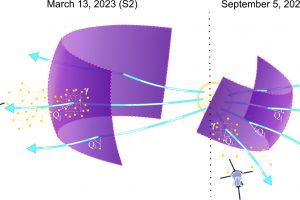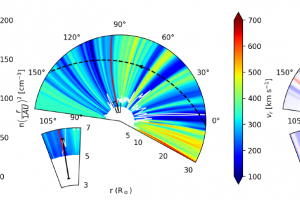First direct detection of relativistic particles accelerated in shocks in the heliosphere described in the study: “Direct Measurements of Synchrotron-emitting Electrons at Near-Sun Shocks” of I. C. Jebaraj (University of Turku)

In the Universe, various environments are characterized by shocks capable of converting the kinetic energy of gas and particle flows into heat, turbulence, magnetic energy, and, ultimately, accelerating particles to relativistic energies, producing cosmic rays. The sizes of these systems can vary by many orders of magnitude, ranging from the typical dimensions of the interplanetary environment to the enormous galaxy
» Read more
